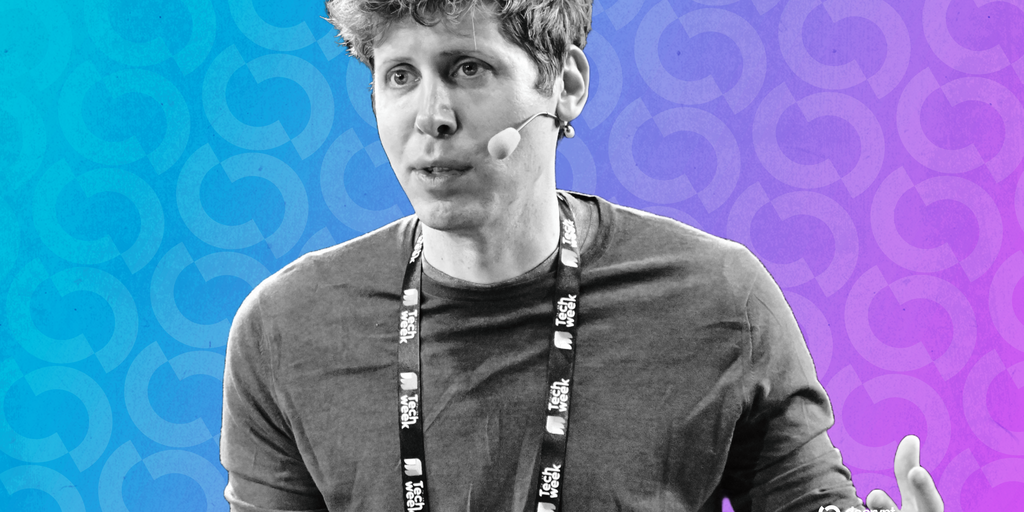In brief
- OpenAI unveiled GPT‑5 today during a livestream event, following weeks of speculation.
- The company released two open-weight models earlier this week.
After weeks of speculation, OpenAI unveiled the next generation of its flagship AI model, GPT‑5. The new model, which creates a simpler interface to the world’s most popular AI platform, arrives amid mounting pressure from rivals like Meta, Anthropic, and Google.
“GPT is a significant upgrade over GPT-4 and a significant step along the path to AGI,” CEO Sam Altman said, noting that among other things, GPT-5 can “write a software program from scratch. We think this idea of software on demand will be a defining characteristic of the GPT-5 era.”
The new model will be available to all GPT users, including the free tier, starting today. Free users will be capped on use and then be rolled over to a “mimi” model.
Altman positioned GPT-5 as a qualitative leap in AI capability during Thursday’s livestream. “GPT-4 is like talking to a college student. Now, GPT-5 is like talking to an expert,” he said, while talking about the company’s ambition to move beyond incremental improvements toward fundamentally different AI interactions.
Business Integration Focus
The company emphasized enterprise applications throughout the presentation. “It will be an especially important moment for businesses,” Altman noted, highlighting GPT-5’s enhanced reasoning capabilities as a potential transformer for corporate workflows and decision-making processes.Unified Reasoning Architecture.
OpenAI described reasoning as central to its artificial general intelligence strategy. “Reasoning is at the heart of our AGI program,” the team explained. The breakthrough eliminates previous trade-offs between speed and analytical depth: “Until now users had to pick between slow answers using reasoning and fast answers with normal token prediction. This model eliminates that barrier.”
Enhanced Performance Metrics
The company touted comprehensive improvements across key metrics. “GPT-5 is faster, more reliable and more accurate” than its predecessor, according to internal testing. OpenAI also positioned the model as “the best coding model to date,” with demonstrated software development capabilities that surpass previous iterations.The model also beats all the scores in different benchmarks shared by the company, especially in math and coding.
Access Structure
OpenAI announced a tiered rollout strategy for the new model. Free tier users will start with GPT-5 before transitioning to a lighter “GPT-5 mini” version when they deplete their usage quota, while Pro subscribers receive unlimited access to the full model. The company confirmed that all existing ChatGPT features will remain compatible with the new system.
ChatGPT currently boasts 700 million weekly active users, compared to Google Gemini’s 47 million weekly users. Despite its large user base, GPT-5 will be competing with Meta AI, whose own weekly user base stands at 700 million, thanks to its integration with Instagram and WhatsApp.
To date, OpenAI has raised $57 billion across 11 funding rounds, according to data from Tracxn, and is valued at $300 billion. According to a Reuters report, that valuation number is expected to rise to $500 billion if a proposed stock sale option goes through. The company doubled its revenue in the first seven months of the year and is expected to reach $20 billion by December 31, Reuters reported.
Altman first publicly confirmed that OpenAI started working on GPT‑5 in 2023, with the actual training phase beginning one year later. On February 13, 2025, Altman outlined the company’s roadmap and said GPT‑5 was expected to launch “within months,” with the aim of unifying OpenAI’s O‑Series and GPT models.
our livestream tomorrow at 10 am PDT will be longer than usual, around an hour.
we have a lot to show and hope you can find the the time to watch!
— Sam Altman (@sama) August 7, 2025
Altman has recently spent a great deal of time opining about artificial general intelligence, fueling speculation that OpenAI could use today’s event to announce a breakthrough. Earlier this month, however, he cautioned that there could be additional delays in the rollout of GPT, asking users to “please bear with us.”
In the run-up to the launch earlier this week, OpenAI released two open-weight models on Tuesday—gpt‑oss‑120b and gpt‑oss‑20b—under an open license, aimed at developers seeking to run models locally.
This story is developing and will be updated.
Generally Intelligent Newsletter
A weekly AI journey narrated by Gen, a generative AI model.

